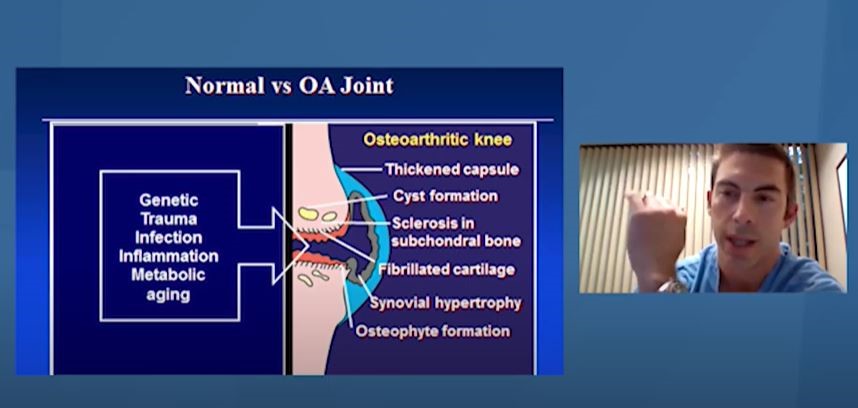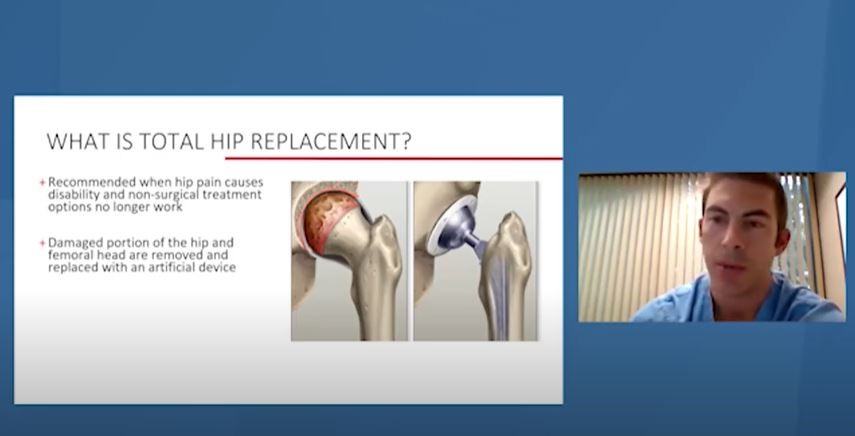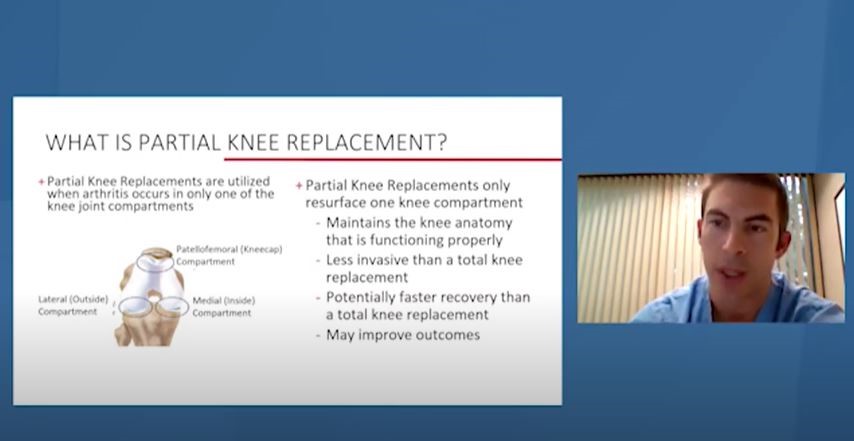As one of the nation’s leaders in joint repair, Dr. Donald Hohman of the Texas Joint Institute is often sought out for his expertise in bone health. He partnered with The Arbor Company to present information on joint health and arthritis, covering topics from how to take preventative care of your joints, different types of conditions and treatments, and when it’s time to see a specialist for your joint pain.
What is Osteoarthritis?
Osteoarthritis is a leading cause of joint pain. It is a breakdown in the cartilage of the joints. When this cushioning cartilage wears out, bones begin to rub together, causing pain, stiffness and damage to the bones.
As the damage continues, the condition will progress. In the early stage there is only mild disease, but this will increase and become progressively worse as it passes through the mid-stage, and finally into late-stage where there is severe damage to the bones and joint.

Osteoarthritis Joint
Causes
- Genetic
- Trauma
- Infection
- Inflammation
- Metabolic aging
Damage
- Thickened capsule
- Cyst formation
- Sclerosis in subchondral bone
- Fibrillated cartilage
- Synovial hypertrophy
- Osteophyte formation
Joint Health and Wellness Tips
- Maintain a healthy weight: losing one pound of excess weight can translate to 5-6 pounds off of the hip or knee with every step!
- Stay moving: whether you are relaxing or watching TV, or working from home, make sure to take breaks to move and prevent joint stiffness.
- Low-impact exercise: low-impact exercise such as swimming, walking, cycling, or using the elliptical machine are great ways to do a cardio workout and keep added pressure off your joints.
- Increase range of motion: working on flexibility with stretching or yoga can help keep joint stiffness at bay and increase your range of motion.
- Correct your posture: your posture throughout the day while you sleep, sit, stand, and even lift objects can greatly affect your joint health. Be aware of your posture and correct it when necessary to protect your joints.
- Eat a balanced diet: eating a well-balanced diet of fruit, vegetables, healthy protein and whole grains will not only help your joint pain but also improve your overall health.
- Stay hydrated: proper hydration is essential to keeping your joints lubricated and your body working at its optimum performance.
- Ask your doctor before taking supplements: if you are wondering if certain supplements are suitable for you, consult with your doctor and make sure to share any and all medications you are currently taking along with your health concerns.
- Wear a brace: braces may be especially helpful in knee arthritis, if the arthritis is centered on one side or the other. A brace can assist with stability and function.
What are my treatment options for arthritis?
Injections
There are various types of injections that your doctor may consider depending on your needs. For example, corticosteroid injections work well in different joints, and have little downside for their use. These injections can offer fast pain relief, however, they only work for a limited amount of time, and that time of relief typically gets shorter with each injection. The relief felt varies by individual.
Once steroid injections are no longer bringing relief, you can also try a hyaluronic acid, or gel injection. The outcome of these injections vary from person to person as well, and are more difficult to get approved by insurance.
Platelet-rich plasma (PRP) is a cutting-edge therapy that you can consider. These are less common, and there are things you need to know before trying. PRP has been shown to have anti-inflammatory effects on stem cells and fibroblasts. Multiple studies have found PRP to be superior to corticosteroid and hyaluronic acid injections in terms of improving patient-reported pain and functionality. While this is encouraging data, unfortunately most insurance companies will not cover this therapy. There are also many variations of PRP, and because it is still an emerging technology, there is no standardized process. This can lead to a wide range of platelet concentrations.
Surgical Options
If you’ve exhausted all of these options, surgery might be your only remaining alternative. Here are some of the options you can consider.
Total Hip Replacement
The damaged part of the hip and the femoral head are removed and replaced with an artificial device. This option is recommended when hip pain causes disability and non-surgical treatment options no longer work.

Partial Knee Replacement
When arthritis occurs in only one of the knee joint compartments, a partial knee replacement can be performed.
This is less invasive than a total knee replacement and has potentially a faster recovery.
Partial Knee Replacements only resurface one knee compartment.
- Maintains the knee anatomy that is functioning properly
- Potentially faster recovery than a total knee replacement
- May improve outcomes

Total Knee Replacement
When the damage is in multiple compartments of the knee joint, a total knee replacement is the best option.
If you have questions or need more information about bone and joint health, be sure to call us at Texas Joint Institute at (972) 566-5255. And make sure to click the YouTube link to watch the full webinar to hear Dr. Hohman answer viewer questions and give more details about how to have bone and joint health.